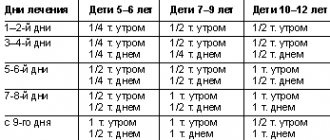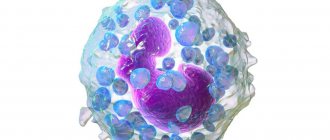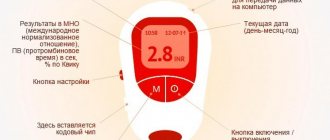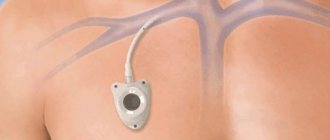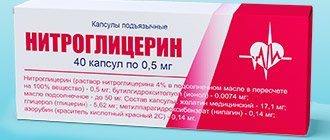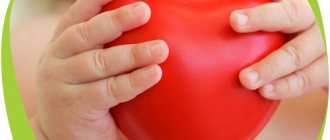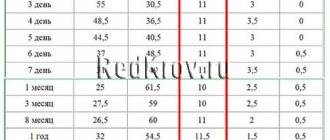General information about the tool
Any intravenous catheter is quite simple.
It is a tube made of silicone, polyurethane or PVC and equipped with a needle at the end. The needle is necessary to enable insertion of the device into the patient’s vein or artery. With its help, the skin and vessel wall are punctured, and a medicinal substance is supplied. For the manufacture of catheters, materials that are safe for the human body are used. They have a number of important qualities, including resistance to the effects of body media or drugs, and lack of toxicity. In some cases, the ports are additionally coated on the inside with a substance that slows down the deposition of drugs or blood elements on their walls. This type of coverage is especially important for patients who will be wearing a catheter for a long period of time.
Types of catheters
In medical practice, there are several classifications of catheters for intravenous administration.
First of all, these important medical devices are usually divided into hard and soft. The former are used mainly for diagnostic purposes. They are not suitable for surgical interventions precisely because of their rigidity: the surgeon does not have the opportunity to work with them based on his own convenience. Soft catheters, on the other hand, are mainly used in medical and surgical applications to meet the various needs of the doctor and the patient. They are ideal as catheters for long-term installation, as they cause minimal discomfort to the patient.
Another important classification is the type of vessel for which the catheter is intended. Highlight:
- arterial type, which is intended for various manipulations with arteries;
- venous type, which is better suited for injection into a vein.
Additionally, several types of catheters are distinguished according to the method of use. For example, some devices are ideal for long-term use, while others are better for short-term use. The area where the catheter is placed also plays a role. Based on this, it can be central or peripheral (in this case, the installation area is the limbs).
Indications for use
There are many different situations in which an intravenous catheter becomes an indispensable device. The main indications for the use of an intravenous catheter are as follows:
- the patient is in one of the emergency conditions, when it is necessary to ensure that the medicine enters the patient’s bloodstream as soon as possible;
- urgent replenishment of lost blood through transfusion is required;
- it is necessary to provide the patient with parenteral nutrition after massive surgical interventions or, for example, due to the patient’s comatose state;
- it is necessary to replenish the lost volume of fluid due to dehydration for any reason;
- gently ensure rapid entry into the bloodstream of the drug in optimal concentration.
In addition to these situations, there are other indications for the use of an intravenous catheter. In each case, the doctor decides on its placement on an individual basis. Then a decision is made about how long the catheter will be present in the patient’s body.
Port - advantage or disadvantage
Many modern intravenous catheters are equipped with an additional port. A port is a hermetically sealed opening through which additional medications can be administered. In this case, there is no need to reintroduce the needle into the patient’s body, that is, the invasiveness is reduced, as is the amount of inconvenience that is usually associated with repeated needle insertion.
However, doctors' opinions regarding ports differ quite widely. Some doctors believe that the presence of an additional port on the catheter is another gateway to infection, to which patients forced to wear catheters are already not very resistant.
If a one-time infusion is required, doctors prefer catheters without a port. This reduces pollution, and the savings are quite significant. However, if regular IV drips are expected, the doctor will choose a catheter with a port. This will prevent irritation of the patient’s skin by constant repeated needle insertions.
Buy a venous catheter:
- Intravenous catheter with additional port | Vogt Medical, Germany (VM) from RUB 10.90
- Intravenous catheter for CHILDREN (without port) with SMALL WINGS and INTRODUCTION DEVICE for newborns and small children | Vogt Medical Vertrieb GmbH, Germany from RUB 15.00
- Intravenous catheter with additional port | Manufacturer: India from 8.50 rub.
- Intravenous catheter with additional port | Manufacturer: China from 8.50 rub.
- Intravenous catheter with additional port and fixing wings | " BEROCAN", Germany ("Beromed")
- Peripheral venous catheter with protective clip and additional port with wings | POLY SAFETY, FEP material (Teflon), India
- Peripheral venous catheter with protective clip and additional port with wings | POLY SAFETY, material PUR (Polyurethane), India
An intravenous (peripheral) catheter is a medical device intended for long-term administration of drugs into peripheral veins (up to 3 days) or removal of liquids, solutions of drugs from the human circulatory system using a catheter inserted into a blood vessel (patient’s peripheral veins) with in order to reduce injury to the vein using a hollow needle (introducer). The needle is removed immediately after the catheter is inserted into the vein. Peripheral venous catheter (catheter into a vein) - inserted into the arm, neck or head. The other end of the catheter is free, through which the necessary drug is administered. Often, an intravenous catheter is used in cancer patients who need to administer drugs intravenously for a long time, for example, chemotherapy drugs, as well as nutritional solutions, blood products, and others. Venous catheters are distinguished by the material of manufacture (Teflon or PUR), which is Teflon (Teflon) - elastic with a smooth surface for standard cases with a catheterization period of 24-48 hours. Venous catheters, India (ie “OneFlon”) are made of polytetrafluoroethylene material. PUR (Polyurethane) is a softer and thermoplastic material, designed for more complex veins and longer catheterizations within 48-72 hours. The VEIN CATHETER is manufactured using modern technology for the production of catheters without the use of latex - this guarantees that there is no risk of developing allergic reactions to latex. Placement of a venous catheter into a vein using the “on a needle” method has features: the tip of the catheter has a smooth cone-shaped narrowing, and the guide needle has a special tip geometry (triangular sharpening with a reverse side cut and special grinding of the needle), a minimum distance from the end of the catheter to the bevel of the needle and a reduction The thickness of the catheter wall towards the distal end provides optimal conditions for puncture of the vessel (vein). The reverse blood flow chamber of the venous catheter provides reliable control of the positioning of the needle in the vein and allows you to quickly determine the success of venipuncture.
Special “wings” of the peripheral venous catheter allow you to securely fix the catheter on the patient’s skin, thereby significantly reducing the risk of mechanical damage to the inner wall of the vessel and the development of mechanical phlebitis. The thin-walled design of the catheter tube allows for maximum infusion rates with a minimum catheter diameter. The peripheral intravenous catheter with an additional port has an injection port for bolus administration of medications and flushing of the catheter, which makes it possible to administer medications during the infusion process.
Catheter wings allow secure fixation of the catheter and eliminate the possibility of unauthorized removal; The venous catheter case reliably protects the needle and catheter from damage. The radiopaque tubing of the venous catheter provides an additional degree of safety by allowing monitoring of the distal tip of the catheter in the event of damage. The venous catheter is internationally color coded for the size of the catheter.
What is catheterization
The content of the article
Catheterization is the process of inserting a urological catheter, a thin flexible tube connected to a reservoir. The tube allows urine to drain from the urinary tract. Most often, the device is inserted through the urethra into the bladder.
Catheter
It happens that the catheter needs to be inserted deeper into the ureters to cleanse the kidneys. In these cases, the device may not always be installed as described above. It is injected through the skin directly into the kidney or bladder (via the pubic symphysis).
Peripheral venous catheter Vogt Medical, Germany (VM)
The VM peripheral venous catheter is used for catheterization of peripheral veins in patients requiring long-term infusion therapy. They are designed for catheterization of peripheral veins for the purpose of long-term infusion therapy; a special catheter profile, as well as triangular sharpening of the guide needle, provide optimal conditions for puncture of the vessel. The cannula is made of thermoplastic and biocompatible material, which is ideal for long-term catheterization, and the radiopacity of the cannula material allows you to control its position. The wings provide comfortable grip during manipulation and reliable fixation of the cannula, thereby eliminating the possibility of accidental removal. Reverse blood flow chamber
allows you to quickly determine the success of venipuncture. The thin-walled design of the tube allows for maximum infusion rate with a minimum cannula diameter. Needle: special stainless steel with a high content of chromium and nickel in accordance with the AISI standard. Catheter: polyurethane/polytetrafluoroethylene. Packaging: blister/box 100 pcs. / box 1000 pcs. Quality: in accordance with ISO 10555 Sterilization: ethylene oxide Shelf life: 5 years
| Catheter size, (G), length, (inch) | Catheter outer diameter x length, mm | Color code | Flow rate, ml/min |
| 14G – 1 3/4 | 2.1 x 45 mm | orange | 270 |
| 16G – 1 3/4 | 1.8 x 45 mm | grey | 200 |
| 17G – 1 3/4 | 1.5 x 45 mm | white | 140 |
| 18G – 1 3/4 | 1.3 x 45 mm | green | 85 |
| 20G – 1 1/4 | 1.1 x 32 mm | pink | 55 |
| 22G – 1” | 0.9 x 25 mm | blue | 33 |
| 24G – 3/4 | 0.7 x 19 mm | yellow | 18 |
| 26G – 3/4 | 0.6 x 19 mm | violet | 10 |
Intravenous catheter (peripheral) with additional port of the river G17-22 - price: 10.90 rub. Intravenous catheter (peripheral) with additional port of the river G14, 16 and G24 - price: 11.50 rub. Intravenous catheter (peripheral) with additional port of the river G26 — — price: 11.90 rub. , Germany “Beromed GmbH Hospital Products”, Germany (TM “BEROCAN”) Analogues: Vasofix Braunula / Intravenous cannulas with injection port “Vasofix”
PEDIATRIC CANNULES WITH SMALL WINGS AND INSERTION DEVICE for newborns and small children
Needle (Stainless steel)- Cannula (Fluoroethylenepropylene/polyurethane)
- Cannula holder (Polyoxymethylene)
- Wing body (Polypropylene)
- Needle hub (Polypropylene)
- Needle gripper (Polypropylene)
- Luer Lock Cover (High Density Polyethylene)
- Needle cover (Polypropylene)
- Device for inserting a catheter into a vein (Polypropylene).
Intended use: Catheterization of peripheral veins in newborns and small children is an effective method of providing reliable access to the venous system for catheterization of thin and fragile vessels and is recommended for use in neonatology, pediatrics and geriatrics, Removable false port system (device for inserting a catheter into a vein) makes it possible to use the usual gripping technique when inserting a catheter. After installing the catheter, flexible wings are released, facilitating reliable fixation even on the arm of a newborn. The use of peripheral venous cannulas (IV cannulas) in neonatology and pediatrics significantly reduces the number of complications and improves the quality of treatment, ensures motor activity and comfort for the child and minimizes the psychological burden on relatives. Main advantages: The pediatric venous catheter (IV cannula) has a special convenient design for use in neonatology and pediatrics:
•Available in sizes (24 - 26 G) •Best needle tip geometry with Buck Cut cut (special sharpening) •Cannulas with built-in 4 radiopaque strips •Made from PU (polyurethane) or FEP (fluoroethylenepropylene) •PU cannulas have “ “memory effect” •Thromboresistant catheter •High biocompatibility •Latex-free
| Catalog no. | X-ray contrast stripes | Size | Length in mm | Wings | Flow rate | Code color | Quantity per pack |
| IV PEDIATRIC CANNULES WITH SMALL WINGS AND INTRODUCTION DEVICE | |||||||
| 1311702H | 4 | 24G | 19 | small | 18 ml/min | yellow | 100/1000 |
| 1311703H | 4 | 26G | 19 | small | 10 ml/min | violet | 100/1000 |
Quality and safety: Standard: ISO 10555-1.5 Sterilization: Ethylene Oxide Shelf life: 5 years. Packaging: Blister packaging / 100 pcs per pack. 1000 pcs. in cor. , Germany Price: 15.00 rub. Analogues: " BD Neoflon", B.Braun "Vasofix"
Catheterization procedure
For most people, catheterization involves inserting a drain through the urethra into the bladder. If the procedure is carried out correctly, everything will be done without injury.
The catheter is coated with a gel with gliding and anesthetic properties. This substance also has a bactericidal effect, which prevents urinary tract infections. The tube itself is sterile, but may allow bacteria to migrate (such as E. coli that accumulate around the anus).
Catheterization is easier in women because they have a short urethra. In men, the urethra is long and naturally narrowed in three places, therefore, in order not to damage it, this procedure should be performed only in a good clinic with a urologist.
Removal of the catheter is also painless. But the first urination can be quite unpleasant (may be accompanied by a burning sensation, mild pain). Incompetent, too aggressive procedure causes pain and can even damage the urethra.
Painful urination
The cause of discomfort and inflammation of this sensitive part of the urinary tract can also be a drainage diameter that is too large.
Intravenous catheter with additional port made in India
Intravenous catheters are intended for catheterization of peripheral veins for the purpose of long-term or short-term infusion-transfusion therapy. Material: polypropylene, medical steel, Teflon, polyacetal, high-density polyethylene, low-density polyethylene, silicone.
Intravenous catheter Polyflon or SoftCathe transparent intravenous catheter made of Teflon, central hole with atraumatic edges; four x-ray positive strips along the entire length of the catheter; pavilion with a luer-lock port for connecting an infusion line or syringe; bending wings. An additional port for instant injections with a non-return petal valve is located at the top of the catheter; Equipped with a standard Luer-lock connector.
Unified color coding of the catheter size “SoftCathe”
| Catheter size, (G) | Catheter outer diameter, mm (OD) | Int. catheter diameter, mm (ID) | Color code | Length, mm | Flow rate, ml/min |
| 14G | 2,0 | 1,7 | orange | 45 | 305 |
| 16G | 1,7 | 1,3 | grey | 45 | 200 |
| 17G | 1,5 | 1,1 | white | 45 | 142 |
| 18G | 1,3 | 0,9 | green | 45 | 95 |
| 20G | 1,1 | 0,8 | pink | 32 | 65 |
| 22G | 0,9 | 0,6 | blue | 25 | 36 |
| 24G | 0,7 | 0,5 | yellow | 19 | 23 |
Stiletto needle with a triangular oblique cut; transparent needle pavilion with a Luer-lock connector, equipped with two grooves for fixing the stylet with the catheter pavilion, finger rest; removable translucent plug on the Luer-lock connector.
An additional luer-lock plug made of opaque white plastic with a faceted outer surface is fixed on the needle pavilion plug. The catheter is closed with a protective transparent cap. Sterilization: individual blister packaging. Sterilization using ethylene oxide. Shelf life: 5 years.
, India (TM "SoftCathe" or "OneFlon") "Global Medikit Limited", India (TM "Mediflon") "La-med Healthcare Pvt. Ltd" , India (TM "La-med IV cannula") "SURU International PVT.LTD" , India (TM "SURUFLON") "Poly Medicure Limited" , India (TM "POLYFLON FEP" ") "Interpharma" , India (t.m. "EUROFLON")
Intravenous catheter (peripheral) with additional port of the river G16-22, price: 8.50 rub. Intravenous catheter (peripheral) with additional port of the river G 24, price: 9.50 rub. Intravenous catheter (peripheral) with additional port of the river G14 and G26, price: 10.90 rub.
Intravenous catheter with additional INTEGRAL port
An intravenous catheter with an additional port is intended for long-term (up to 3 days) administration of drugs without additional puncture into the patient’s peripheral veins. Made of fluorinated ethylene propylene (fluoropolymer) with Teflon coating, it is elastic, optimal rigidity prevents the formation of creases, transparent, non-toxic, has a high degree of biocompatibility, has pyrogen-free, non-toxic, and since it comes into direct contact with blood - biocompatible and hypoallergenic properties.
The sharp and elastic needle is made of high-quality durable medical steel and is resistant to various chemicals. Slippery surface due to the low surface tension of the polymer, optimal rigidity prevents the formation of creases.
Advantages:
- the possibility of without a needle bolus (intermittent) administration of drugs without interrupting the intravenous infusion.
- transparent chamber allows you to verify the success of venipuncture
- low coefficient of friction reduces pain during catheter insertion
- the catheter fits tightly around the needle and minimally injures tissue when inserted into a vein
- the minimum distance from the end of the catheter to the needle cut and a decrease in the thickness of the catheter wall towards the distal end facilitates vein puncture
- the presence of radiopaque stripes provides effective control over their location in the vein.
- The presence of wings allows not only to securely fix the catheter to the skin, but also reduces the risk of bacterial contamination, since they do not allow direct contact between the back of the catheter plug and the skin.
- The injection port cover opens and closes effortlessly.
- the plug has an internal thread, which ensures a tight fit of the plug to the catheter and completely eliminates contact with the patient’s blood
- The color coding corresponds to the catheter size designation.
- sterile
- intended for single use
- shelf life – 5 years
Intravenous catheter with additional port INTEGRAL dimensions
| Catheter size, (G) | Catheter outer diameter, mm (OD) | Color code | Length, mm | Flow rate, ml/min |
| 14G | 2,1 | orange | 45 | 270 |
| 16G | 1,7 | grey | 45 | 180 |
| 17G | 1,4 | white | 45 | 125 |
| 18G | 1,3 | green | 45 | 80 |
| 20G | 1,1 | pink | 33 | 54 |
| 22G | 0,9 | blue | 25 | 33 |
| 24G | 0,7 | yellow | 19 | 20 |
| 26G | 0,6 | violet | 19 | 13 |
, China (tm. "INTEGRAL")
Intravenous catheter (peripheral) with additional port of the river G 16-24, price: 8.50 rub. (remains) Intravenous catheter (peripheral) with additional. port of the river G 14 and 26 price: 10.00 rub. (leftovers)
INTRAVENOUS CATHETERS “Beromed” FOR PERIPHERAL VEINS with an additional port and fixing wings (remains)
Intravenous catheters “BEROMED” for peripheral veins with an additional port and fixing wings are used for long-term intravenous infusions. Specifications:
- The puncture needle is made of high-quality, thinnest surgical steel, which allows it to maintain strength with minimal wall thickness
- triple sharpening of the needle ensures atraumatic insertion
- the elastic surface of the catheter allows painless insertion of the catheter into the vein
- two built-in radiopaque strips
- integrated injection port "Luer" / "Luer-Lock" type "male" with non-return valve
- fixing wings allow you to securely secure the catheter
- color coding of the additional port plug allows you to visually determine the size of the catheter
- hydrophobic catheter plug prevents blood leakage, removable plug for quick closure of the catheter
- catheter material FEP (fluoroethylpropylene), sizes G 14, 16, 17, 18, 20, 22, 24, 26
- the entire product is made of materials with a high degree of biotolerance, sterile, pyrogen-free, non-toxic
- Individual packaging, easy to open, contains all the necessary information about the product.
Intravenous catheter with additional port “Beromed”, Germany
| Catheter size, (G), length, (inch) | Catheter outer diameter x length, mm | Color code | Flow rate, ml/min FEP | Flow rate, ml/min PUR |
| 14G – 1 3/4 | 2.1 x 45 mm | orange | 305 | 305 |
| 16G – 1 3/4 | 1.7 x 45 mm | grey | 200 | 200 |
| 17G – 1 3/4 | 1.5 x 45 mm | white | 142 | 142 |
| 18G – 1 3/4 | 1.3 x 45 mm | green | 95 | 95 |
| 20G – 1 1/4 | 1.1 x 32 mm | pink | 60 | 60 |
| 22G – 1” | 0.9 x 25 mm | blue | 36 | 36 |
| 24G – 3/4 | 0.7 x 19 mm | yellow | 23 | 23 |
| 26G – 3/4 | 0.62 x 19 mm | violet | 17 | 17 |
, Germany (t.m. “BEROCAN”) Venous catheter with additional port + wings, river. G 16-24, price: 10.90 rub. Venous catheter with additional port + wings, r. G 14-26, price: 11.50 rub.
Peripheral venous catheter with a protective clip and an additional port with POLY SAFETY wings, FEP material (Teflon)
The peripheral intravenous catheter, equipped with a self-locking device (Safety type) is a disposable sterile peripheral intravenous catheter on a sterile stainless steel needle, intended for puncture and catheterization of peripheral veins, equipped with a device for blocking the needle tip in the form of a bullet-shaped clip that is self-installed during reverse traction (when removed needles from the catheter).
disposable venous catheter - has a device (hydrophobic plug) that blocks the needle tip with a plastic clip during the completion of the traction movement when removing the needle from
catheter installed in a vein. This prevents attempts to reuse the catheter, as well as to advance the needle into the catheter if installation is unsuccessful (the possibility of cutting off the catheter with the needle tip when attempting to advance again is eliminated). Specifications:
Safety catheter composition: Manufacturing materials: FEP (Teflon) or PUR (Polyurethane) , the catheter has 4 (FEP) and 6 (PUR) fully built-in radiopaque strips, an additional infusion port with a tight, quick-release, harness-fixed, sealed cap, wings , Luer-Lock plug, puncture needle is made of stainless steel with an additional Luer-Lock plug made of opaque white plastic with a faceted outer surface, fixed on the needle pavilion plug. International color coding for catheter cap. Does not contain Latex (LATEX FREE) Safety FEP (G) catheter sizes: 14, 16, 18, 20, 22, 24, 26, 27 Packaging: Individual, sterile, Tyvek blister, multiples of 100 pcs. Sterilization: ethylene oxide. Shelf life: 5 years. Brand and , India
Price:
Intravenous catheter with protective device “POLYSAFETY” material FEP (Teflon) p. G 16-22, price: 45.00 rub. Intravenous catheter with protective device “POLYSAFETY” material FEP (Teflon) p. G 24, price: 47.00 rub. Intravenous catheter with protective device “POLYSAFETY” material FEP (Teflon) p. G 26, price: 50.00 rub.
Catheterization: indications
- The catheter should be placed first when urine is standing still, which can happen with benign prostatic hyperplasia or kidney stones.
- The device is used for perineal trauma, which leads to damage to the urethra. Before the organ heals, drainage is inserted through the abdominal wall directly into the bladder.
- Catheterization is also necessary after some operations on the genitourinary and gastrointestinal systems.
- The catheter is inserted into patients in a pharmacological coma.
- The device helps laboring women if they are unable to empty their bladder.
Bedridden patient with a catheter
In all these cases, the catheter is not inserted for long, since its presence contributes to urinary tract infections. But some patients need catheters permanently. For example, urine diversion is needed for people with a neurogenic bladder and neurological diseases.
Care
The condition for effective treatment and prevention of complications is the use of correct equipment, installation and proper care of the instrument.
To protect the blood from infection, it is necessary to come into contact with the catheter less often and follow the rules of asepsis.
After use, the equipment must be rinsed with saline solution.
In addition, to extend the service life of the product and eliminate thrombosis, it is necessary to rinse the instrument additionally 4-6 times a day with sodium heparin solution and saline solution in the proportion of 2500 IU of heparin per 100 ml of saline solution.
The plugs should be changed quite often; you should not use products that could be infected.
It is important to constantly check the fixation bandage.
Do not use scissors when changing the adhesive bandage.
Employees of a medical institution are required to regularly record the volume of drugs administered and evaluate the results achieved.
Swelling, redness of the skin, temperature, pain, blockage and leakage of the catheter are reasons to remove it from the person’s vein and stop the procedure.
It is recommended to change the area of peripheral vein catheterization every 2-3 days. Even in the absence of visible indications, routine catheter replacement at specified intervals is carried out to ensure its effective operation. According to clinical studies, after 72-96 hours, in most cases, infiltration (leakage of fluid into the surrounding tissue) and disruption of the tube’s patency are observed, that is, the inability of fluid, including medicinal compounds, to enter the blood vessel.
Modern devices
In medical practice, catheters with steel needles are currently practically not used, because the comfort and safety of the patient come to the fore. Unlike the metal model, a plastic peripheral intravenous catheter can follow the bends of the vein. Thanks to this, the risk of injury is significantly reduced. The likelihood of blood clots and infiltrates is also minimized. In this case, the time that such a catheter remains in the vessel increases significantly.
Patients who have such a plastic device installed can move calmly without fear of damaging their veins.
Carrying out the installation
Every nurse should know how to place an intravenous catheter. To do this, the injection site is pre-treated, a tourniquet is applied and measures are taken to ensure that the vein is filled with blood. After this, the cannula, which the nurse takes in the hand with a longitudinal or transverse grip, is inserted into the vessel. The success of venipuncture is indicated by the blood that should fill the catheter imaging chamber. It is important to remember: the larger its diameter, the faster this biological fluid will appear there.
Because of this, thin catheters are considered more difficult to work with. The cannula should be inserted more slowly, and the nurse should also focus on tactile sensations. When the needle enters the vein, a hole is felt.
After contact, you need to push the device further into the vein with one hand, and fix the guide needle with the other. After completion of catheter insertion, the guide needle is removed. It cannot be reattached to the part remaining under the skin. If the vein has been lost, the entire device is removed and the insertion procedure is repeated again.
It is also important to know how intravenous catheters are secured. This is done using an adhesive plaster or a special bandage. The site of entry into the skin itself is not sealed, as this can lead to the development of infectious phlebitis.
The final step is flushing the installed catheter. This is done through the installed system (for unported variants) or through a special port. The device is also washed after each infusion. This is necessary in order to prevent the formation of blood clots in a vessel with an installed catheter. It also prevents the development of a number of complications.
Prevention
To prevent complications, the catheter installation site is inspected daily and the sutures are treated with antiseptics.
If blood leaks from their wounds, the bandages are changed without delay. To prevent infection, it is necessary to thoroughly rinse the catheter tubes with saline solution after each manipulation:
- administration of antibiotics;
- administration of nutrient solutions;
- administration of blood components.
After rinsing, a small amount of heparin-containing isotonic sodium chloride solution is injected into the tube.
When installing a catheter for a long time, it is recommended to apply a compress with thrombolytic ointments in the area of the puncture and 3-5 cm above it.
Possible complications
The algorithm for placing a peripheral venous catheter is quite simple. However, the risk of complications is very high, since the skin is injured.
- Phlebitis is sepsis of a blood vessel associated with mechanical stress or infection.
- Thrombophlebitis.
- Thrombosis.
- Equipment bending.
A common problem is infection, especially with penetration into the circulatory system. Sometimes it can even be deadly. To prevent the spread of pathogenic bacteria, various preventive measures are used, including surface treatment or impregnation of the catheter with antiseptic or antibacterial compounds.
Disadvantages and advantages of metal models
In modern medical practice, steel options are used extremely rarely. After all, their service life is quite short - they can remain in the vein for no more than 24 hours. In addition, hard needles cause vein irritation. Because of this, thrombosis or phlebitis may develop. Also, the possibility of trauma or necrosis of part of the vein wall cannot be excluded. And this may cause extravasal administration of the drug.
Through such catheters, solutions are injected not along the blood flow, but at a certain angle. This causes chemical irritation of the inner layer of the vessel.
To prevent the possibility of complications when working with steel intravenous catheters, they must be firmly fixed. And this limits the mobility of patients.
But, despite all the disadvantages described, they also have a number of advantages. The use of metal catheters reduces the risk of developing infectious lesions, because steel does not allow microorganisms to enter the bloodstream. In addition, they are easier to install in thin veins that are difficult to visualize. Therefore, their use is practiced in neonatology and pediatrics.
Types of devices
Medical facilities may use one of four types of catheters. The following types are distinguished:
— models intended for short-term use;
- central peripheral intravenous catheters, which are installed in the veins of the arms;
- tunnel catheters, which are inserted into wide bloodstreams, for example into the vena cava;
- subcutaneous venous catheters inserted under the skin in the chest area.
Depending on the materials used in the manufacture of these devices, metal and plastic models are distinguished. The choice of the appropriate option in each specific case is made only by a doctor.
A metal catheter for intravenous infusions is a needle that is connected to a special connector. The latter can be metal or plastic, some of them are equipped with wings. Such models are not used very often.
Plastic catheters are a connected plastic cannula and a transparent connector that are slipped over a steel needle. Such options are used much more often. After all, they can be used longer than metal catheters. The transition from a steel needle to a plastic tube is smooth or cone-shaped.

